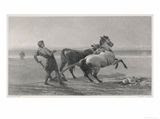Analysis of Corporate Blog Site #1

Please see the screenshot of the In The Field Blog: (at right)
The parent corporation of the site is Nature Publishing Group (NPG) is a division of Macmillan Publishers Ltd, and it is a limited liability c orporation of British registry.
The blog home site is NatureNews, and the main title of the blog is: In the Field, located at the following address:
URL: http://blogs.nature.com/news/blog/. The blog serves as an Events Blog and is designed to appeal to the intended audience of scientists from all scientific disciplines, writers, educators, and the general public. The principle goal of the blog can be found in the original mission statement of Nature, first published on the 11th of November, 1869. As described in the mission statement, the purpose of the original written journal that extends to the present-day online publication is to:
“FIRST, to place before the general public the grand results of Scientific Work and Scientific Discovery ; and to urge the claims of Science to a more general recognition in Education and in Daily Life ;
And, SECONDLY, to aid Scientific men themselves, by giving early information of all advances made in any branch of Natural knowledge throughout the world, and by affording them an opportunity of discussing the various Scientific questions which arise from time to time.”
The online blog journal simplifies this mission, expressing it thusly; “the Nature newsblog has two roles: to provide our readers with an easy way to comment on our news stories, and to provide diary entries from our reporters at scientific conferences and events.”
Nature magazine is a leader in the field of information science, having actively written about scientific issues and advances for the past 140 years. Nature has adapted to market demands and is at the forefront of online journalism in establishing and maintaining an online presence in the scientific world. Nature does this by having reporters attend conferences and file reports that are available for the viewing of the scientific community and for the public, through the use of an online journal presence and the use of a blogsite entitled In the Field. The blog posts and summaries of the scientific findings are available, free online, for four days after posting, and then the site shifts the blog posts to a pay per article format.
The average length of the entries for the In the Field site, based on the 10 most recent entries at time of this analysis, amounts to: 464.9 for Blog posts by journalists, and 217.2 by Blog posters from the general public.
The blog uses the visual design principles of space to project a 2 dimensional appearance using length and width, and employs the concept of unity, through the use of a clean aesthetic design, with good use of white space. The site uses horizontal lines and vertical columns, and creates balance by creating a space where the the first two columns of the site are clean and equally weighted, with the third column (for graphics) adding heavier weight to the appearance of the site.
The color scheme used is classic, and muted in tone with red headers, black text and white negative space, creating harmony through the use of color and design, and is achieved by unified type settings, and a positive use of color. The promary shape used in the design layout uses a 2 column layout, with rectangular columns, and full- screen display format. The softness of the type contrasts with the larger point size of the column headings, drawing attention to the topics.
Pictures add positive contrast to site, and the smooth texture of the site is enhanced by the addition of photographs and visuals in design structure. The layout of each post is repeats in uniformity with the overall design. Positive rhythm creates interest, readability, and reduces randomness in design.
The site uses the element of value by the inclusion of images , charts and graphs that appear almost 3 dimensional, and the graphics used in the site provide variety, with posts that are standardized in size, weight, type and color. The type that is used is uniform throughout the site and allows for easy readibility. Particular emphasis is drawn to each column, with categories on the left side of the page, articles in the middle, and graphics on the right of screen, drawing the viewer's attention to each section.
The site uses the element of proportion, using the relative size of elements that are appropriate, and creates harmony. The site is well designed for functionality, and uses three standardized columns that allow for easy navigation throughout the site.
The overall corporate image represented by the design of the site is elegant, breathable, enhances ability of reader to locate and navigate throughout site, and implies trustworthiness, dependability, permanence, and professionalism.


It was really an informative blog. You mentioned a quite good summary of online presence analysis.
ReplyDeleteonline presence analysis
Hey its really very nice thing. thanks for posting... contect online marketing is really an amazing, Awesome post about Free Online Presence Analysis and accommodation services.…!!
ReplyDeleteFree Online Presence Analysis